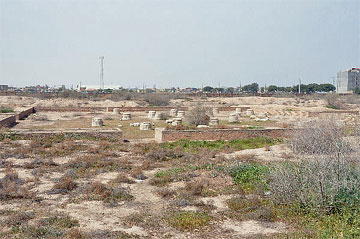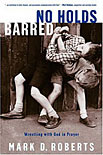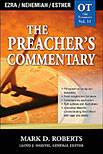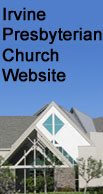« Sunday Inspiration from The High Calling | Home | Work and Prayer in Nehemiah 1 »
Introduction to Nehemiah
By Mark D. Roberts | Tuesday, September 8, 2009
Part 4 of series: A Theology of Work in Ezra and Nehemiah
Permalink for this post / Permalink for this series
Last week I introduced the Theology of Work Project (TOWP). I explained the vision of this project and my own participation in it. My task, as you may recall, is to do a commentary-like overview of the Old Testament books of Ezra, Nehemiah, and Esther. For each book, this overview seeks to answer the question: What is the theology of work in this book?
As I mentioned before, none of these books is composed primarily of didactic or legal or prophetic material. You can’t turn to a chapter that instructs on the nature of work or how we should do it. Rather, Ezra, Nehemiah, and Esther are narratives, and in these narrative, work happens. Thus we can learn from the example of the “workers” in these books. Moreover, upon occasion, one of the leading characters says something that, by implication, helps us to glimpse an implicit theology of work.
At the end of last week I examined the book of Ezra, introducing the text and then examining it for theology of work material. Ezra doesn’t have much to say about work, per se, though it does feature a kind of work, namely building (or rebuilding) the Temple in Jerusalem. This effort reveals something of the nature of work, when seen from a biblical point of view.
The book of Nehemiah is similar to Ezra in many ways. This comes as no surprise, of course, once we know that Ezra and Nehemiah were once part of a single, two-part work. In fact, in my commentary on Ezra, Nehemiah, and Esther for the Communicator’s/Preacher’s Commentary series, I treated Ezra-Nehemiah as a single work. The book we call Nehemiah continues the story began in Ezra, focusing on the rebuilding of the wall of Jerusalem and the rebuilding of the people of God in light of the covenant.
The book of Nehemiah, which features the rebuilding efforts of the man Nehemiah, opens by placing the events in a historical context: “In the month of Kislev in the twentieth year, while I was in the citadel of Susa . . .” (1:1). This gives us a date and a place. Of course we have to ask, “In the twentieth year of what?” The answer comes in Neh 2:1, where it says, “In the month of Nisan in the twentieth year of King Artaxerxes . . .” (2:1). But even this isn’t entirely helpful, because the Persians had three kings named Artaxerxes. So which one is in view here? Though there is not scholarly unanimity on this matter, many believe that Nehemiah refers to Artaxerxes I who ruled from 465 to 423 B.C. This would place the beginning of Nehemiah in 445 B.C., which would be about thirteen years after Ezra’s work in Jerusalem.
 The “citadel of Susa,” or perhaps the “capital of Susa,” points to the winter lodging for Persian kings. The city of Susa, located in modern Iran, not far from the Iraqi border, included a large palace that had been built by Darius. The fact that Nehemiah was in Susa suggests what is made explicit in the last verse of the first chapter, that Nehemiah was associated with the Persian king Artaxerxes I. (Photo: Excavation of the palace in Susa. The cell phone tower in the background was a later addition, not found in the time of the Persian kings.)
The “citadel of Susa,” or perhaps the “capital of Susa,” points to the winter lodging for Persian kings. The city of Susa, located in modern Iran, not far from the Iraqi border, included a large palace that had been built by Darius. The fact that Nehemiah was in Susa suggests what is made explicit in the last verse of the first chapter, that Nehemiah was associated with the Persian king Artaxerxes I. (Photo: Excavation of the palace in Susa. The cell phone tower in the background was a later addition, not found in the time of the Persian kings.)
In fact, Nehemiah was the king’s “cupbearer” (1:11). To us, this may sound like a lowly position. After all, Nehemiah was not only the one who held the king’s cup, but also the one who tested the king’s drink to make sure it was safe. Even as Secret Service agents are committed to “take a bullet” for the President, so Nehemiah was willing to “drink the poison” to protect his king. But, in reality, the cupbearer was also a trusted adviser to the king. He enjoyed a position of honor, luxury, and authority. As we’ll see in the unfolding drama of Nehemiah, his position with the king was crucial in his effort to restore the city of Jerusalem.
In my next post I’ll have more to say about what we learn about Nehemiah in chapter 1, and how this touches upon our understanding of work.
Topics: Theology of Work Project |
Comments
Thanks for your willingness to make a comment. Note: I do not moderate comments before they are posted, though they are automatically screened for profanities, spam, etc., and sometimes the screening program holds comments for moderation even though they're not offensive. I encourage open dialogue and serious disagreement, and am always willing to learn from my mistakes. I will not delete comments unless they are extraordinarily rude or irrelevant to the topic at hand. You do need to login in order to make a comment, because this cuts down on spam. You are free to use a nickname if you wish. Finally, I will eventually read all comments, but I don't have the time to respond to them on a consistent basis because I've got a few other demands on my time, like my "day job," my family, sleep, etc.
You must be logged in to post a comment.














